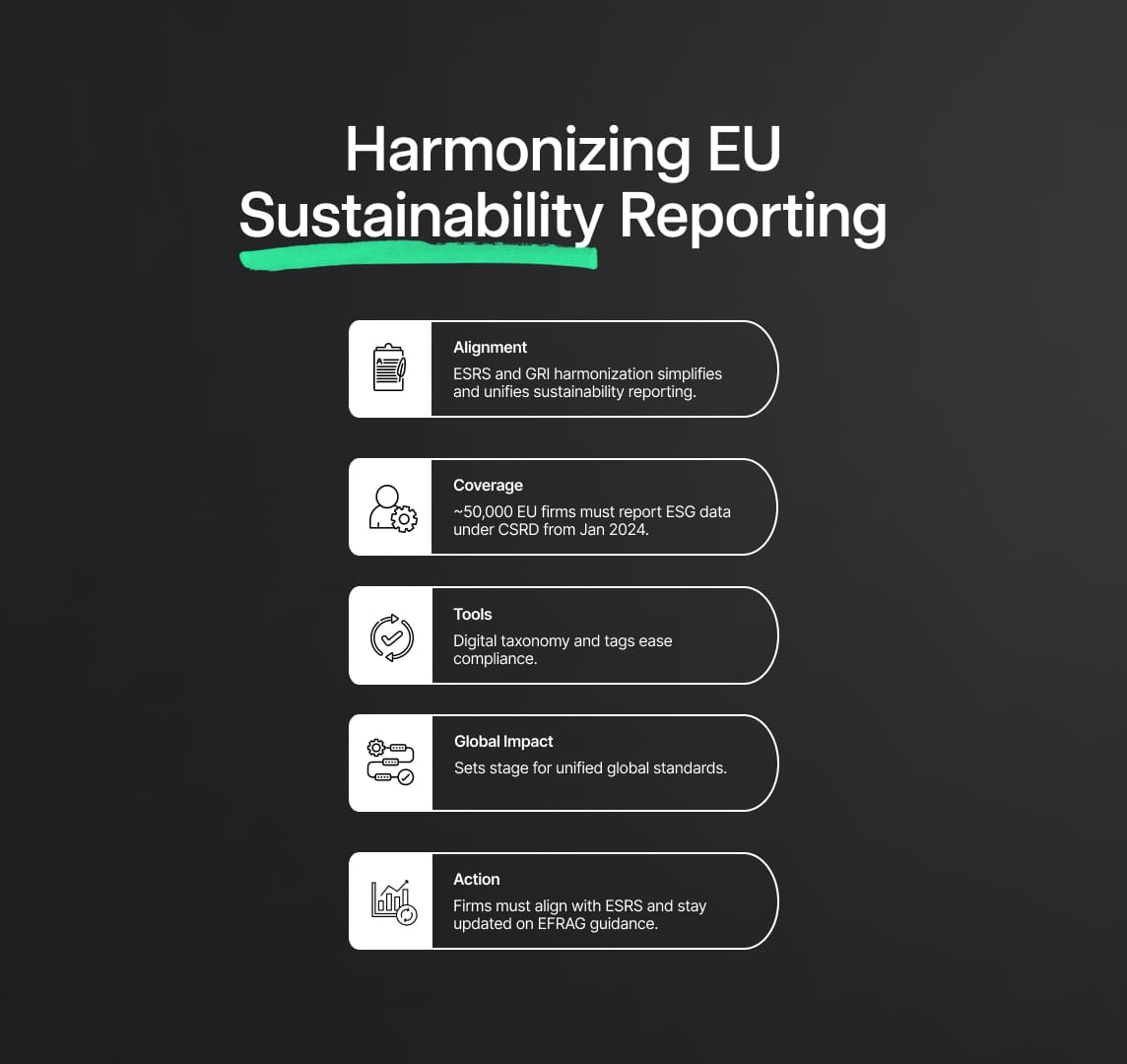European Sustainability Reporting: alignment with GRI
EU aligns European Sustainability Reporting Standards (ESRS) with GRI, streamlining reporting for 50,000 companies from Jan 2024. A step towards transparency, accountability, and a sustainable global economy. Businesses must adapt and align for a smoother transition.

ESRS Aligns with GRI: EU Embraces New Sustainability Reporting Standards
The Global Reporting Initiative (GRI) and the European Sustainability Reporting Standards (ESRS) have received strong support from the European Commission. In terms of reaching worldwide interoperability in sustainability standards, this is a major step forward. The European Commission has approved the first set of 12 ESRS, which will motivate GRI reporters to get ready to start filing reports under the ESRS in January 2024. As stipulated in the Corporate Sustainability Reporting Directive (CSRD), large and publicly traded EU corporations will be required to adopt the ESRS. Everyone applauds the ESRS's design, which aims to harmonize with international standards and do away with the necessity for duplicate reporting. GRI, which collaborated closely with EFRAG, the organization in charge of implementing the ESRS, has played a significant role in its development. In order to enhance future collaboration and expedite reporting processes, both firms are utilizing a digital taxonomy and multitagging system. It is anticipated that this endeavor will help businesses report in compliance with the GRI and ESRS Standards. This is accomplished with a single report, encouraging simplicity and efficiency.

Sustainability Reporting: The EU's Alignment with Global Standards
With the advent of a more environmentally concerned society, the European Union (EU) is making significant progress in promoting sustainable corporate practices. This commitment is demonstrated by the recent declaration from the European Commission that the ESRS and the GRI will be aligned. This innovative step is expected to improve transparency and expedite reporting procedures.
Large and publicly traded businesses doing business in the EU, as well as financial institutions including banks, asset managers, and insurance providers, are the main targets of this rule. For these companies, the Corporate Sustainability Reporting Directive (CSRD), which requires the use of ESRS, offers both a difficulty and an opportunity.
About 50,000 businesses will now be required to declare their sustainability impacts, risks, and opportunities beginning in January 2024, following the adoption of the first 12 ESRS. In doing so, the directive promotes sustainable business practices on a large scale and cultivates an environment of accountability.
The ESRS's ability to work in harmony with international standards and do away with the requirement for duplicate reporting is one of its primary characteristics. A less onerous and more efficient reporting process is made possible by the ESRS. This procedure is made more simpler by the creation of a digital taxonomy and multitagging system. This provides companies with easy-to-use solutions to fulfill their sustainability reporting obligations.
What this harmonization and coherence portends for sustainability reporting going forward is also quite telling. The establishment of ESRS through collaboration between EFRAG and GRI is a sign of a new era in standard-setting agencies working together more often. Such collaborations may result in more complete and widely accepted standards. The end goal is to promote a more sustainable global economy and push global legislation in the direction of required sustainability reporting.
Businesses need to get ready for this seismic shift and adjust accordingly. They have to use GRI criteria to ensure that their sustainability reporting is in conformity with ESRS standards. It will be crucial to guarantee compliance with the new multitagging and digital taxonomy system. A smoother transition to the new norm will be facilitated by keeping up with EFRAG and European Commission statements on final plans and requirements.
Essentially, there is more to the ESRS alignment with the GRI than just a shift in regulations. It's a step in the direction of changing the global financial ecosystem to make it more sustainable, transparent, and accountable. January 2024 is drawing near, so now is the time to get ready and adjust.
Reduce your
compliance risks

